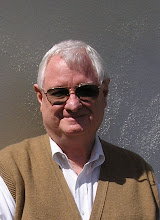
Charles Clinton Crites as a baby in Indiana.

Clinton leads children on his horse.
Charles Clinton Crites (s-322) was born on the 29th of September, 1896 in North Webster, Kosciusko County, Indiana. Called by his middle name “Clinton”, he was the oldest child of Leona Belle (Weaver) (c-53) and John Franklin Crites (c-47). According to marker on his grave, he died in Wheeler, near Hinsdale, Montana of the 17th of December, 1948.
The following is a statement written by Mildred (Crites) Fecht concerning the life of her brother Clinton. In 1995 it was loaned by James L. Fecht for this history.
"I know very little about my oldest brother Clinton, he was six years older than me. Others have told most of these stories to me. "He stayed with our grandmother Crites a lot of the time. My mother told me that one day Claude brought in a baby skunk. Clinton and Claude had found him along the road. Clinton knew it was a skunk or pole cat. He tried to get Claude to put it down, but Claude wanted to take the pretty kitty home. Clinton didn't come in for a long time. Mother got quite worried. Clinton was waiting to see what happened, and of course nothing did. This was in Indiana.
“When we moved to North Dakota, Clinton was eleven years old. He didn't like to go to school. Claude was only one year younger than Clinton, and soon he passed Clinton in school. This must have discouraged Clinton. He was quite unruly at times. He left the house with the rest of us in the morning, came to school at lunch time, and was there to go home with us. All I remember about this is the teacher(s) were sending home notes with Claude saying Clinton had been "playing hooky" which lead to a great deal of punishment at school and home. I learned later he was delivering groceries.”
“One time when our mother was gone, he cooked a meal for us. He had brought home a little wild duck. He put it in kettle and boiled and boiled it. He put it on a big platter, it was very dark (black) not much bigger than a quail. He ladled us out a bowl of broth which was tasteless and then he tried to carve the duck. It slipped all over the platter, but he managed to give each of us a small piece. We couldn't eat it. We did eat the home-made bread in the hot water. He was very angry with us and said, "This is the last meal I'll ever cook for you." It was. Thank goodness.”
“We moved to Montana leaving Clinton and Claude in California. Claude came soon after but Clinton didn't come to Montana for several years. He didn't stay at home very much. I think he worked on a ranch in Montana and Canada. I left Montana in 1918, was married in 1920, going to Missouri to live. I didn't see Clinton for 15 years.
When Bill (William T. Fecht) and I visited his grave in Montana we were told by a friend that Clinton was well liked in Hinsdale, Montana. Some of his friends there had cut the grass and put flowers on the grave."
In September 1997, Gregory Crites emailed: " Hinsdale is west of Glasgow and east of Malta on Highway 2. It is north west of Fort Peck dam. I'm sure that Uncle Clinton worked on Fort Peck dam during the 1930s. We stopped for a tour when we were on that trip.
One thing that I remember from that trip was the fact that there were little towns every 6 miles in that part of the country. They were put there by the railroad as re-supply spots for the old steam driven trains.”
As a child, your author Gerald Fecht, I recall my mother speaking about how Uncle Clinton complained about his "god damned leg hurting all the time." The problem with his leg, I believe had something to do with his death.
In 1988, while on vacation in Old Mexico, Dorothy (Fecht) and Elmer Fetterhoff met a man and woman from Hinsdale, Montana. The lady and her husband owned a ranch there, and "wintered" in Mexico. "She remembered 'our Uncle Clinton', who worked for years in a saloon and in later years owned it. She didn't remember his death or when it was."
Your author believes that Clinton probably owned a bar or worked in one.








